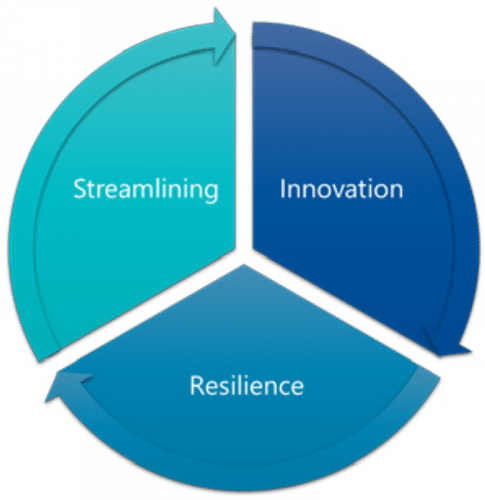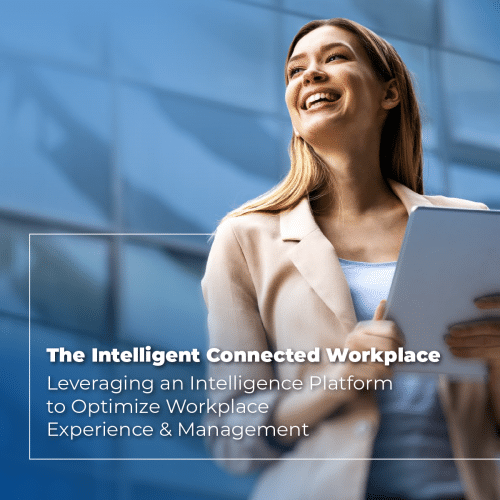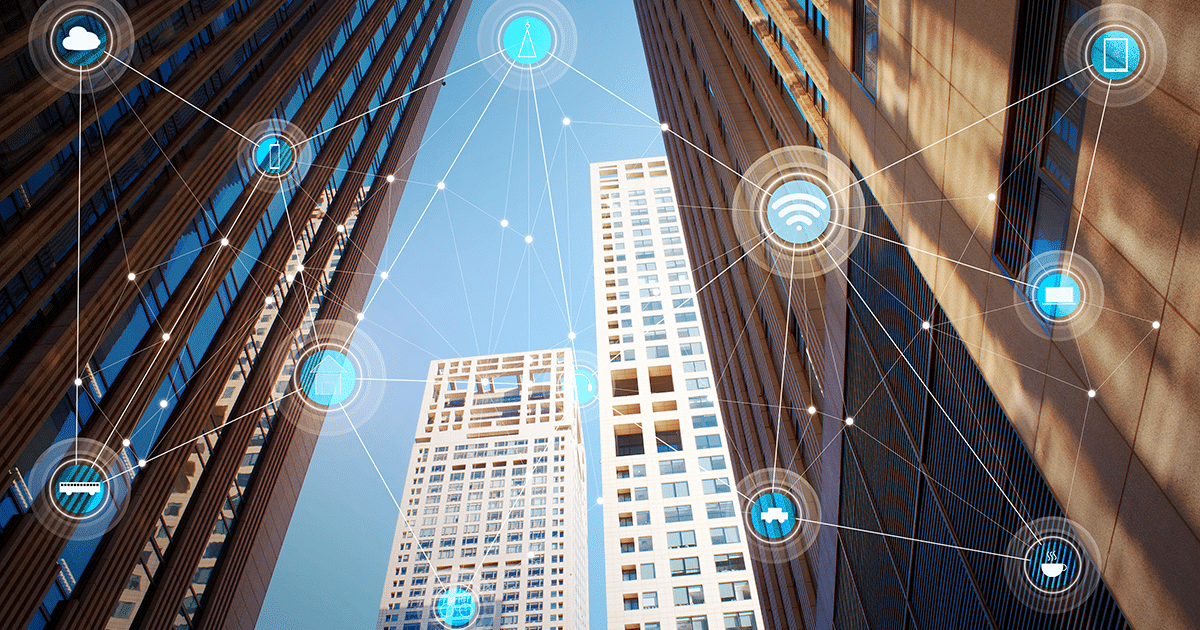A connected intelligence platform offers numerous advantages over separate solutions for facility management and modern workplace management. Three categories of benefits are of particular note, generating financial and human benefits in the short-term while also positioning clients to implement transformational solutions in the long-term.
While these benefits can be captured to various degrees by each of the separate software types, a connected solution can unlock the full potential of these technologies for the modern workplace.

Streamlining benefits
First, and most obviously, it can offer streamlining benefits in the form of lower costs and higher efficiency. For clients that already use IWMS and IoT platforms for smart buildings, switching to a unified solution can:
- Reduce the risk of data translation errors or losses,
- Eliminate compatibility issues,
- Facilitate data sharing or pooling across business silos to enhance analysis capabilities,
- Improve automation capabilities,
- Enhance the user experience by presenting a common interface that can be accessed from a single mobile app,
- Lower subscription fees by reducing the number of vendors, and
- Simplify troubleshooting by directing all service requests to a single touchpoint.
Among companies that do not yet use Smart Buildings solutions, expanding from IWMS to a CPIP platform can become an enormous competitive advantage, particularly as the COVID-19 dislocations have raised competition in the commercial real estate market. Whether by improving comfort levels, increasing the responsiveness of maintenance ticketing, or reducing time spent finding workspaces in an agile office environment, IoT data informing smarter workflows can enhance the user experience in a modern workplace in dramatic ways.
Innovation benefits
Second, a connected intelligence platform forms the foundation for cutting-edge technologies like machine learning and artificial intelligence in building management, which rely on huge quantities of reliable, relevant, and easily processed data. Thus, CPIP generates tremendous innovation benefits. The potential for machine learning in building management has been gaining recognition in recent years, covering such possibilities as predictive maintenance and real-time management of temperature and light to achieve cost savings and optimal comfort. These applications require not just ongoing data collection but also training data to set initial baselines and pattern analytics. Early adoption of CPIP to ensure rapid migration is thus essential to gain competitive advantages.
However, CPIP innovation potential extends beyond these high-profile applications. CPIP can facilitate rapid responses to emerging science about how to capture health improvements in office environments by monitoring air quality, temperature, humidity, carbon dioxide levels, VOCs, particulate matter, radon, and other metrics relevant to human health. Such monitoring may be required for certifications like the WELL Building Standard® or LEED. For clients involved in all aspects of a building lifecycle – design, build, and manage – the insights developed by CPIP, which optimizes the management phase, can be used to enhance design and build requirements, such as by helping to optimize the placement and design of sensor technologies or shape floorplans to enhance user satisfaction.
Ultimately, many of the innovation benefits of CPIP will depend on the particular goals and needs of its users. What is clear, however, is that technologies that collect data and – more importantly – are able to translate those data into actionable insights will form the basis for future competitive advantages for businesses of all types.
Resilience benefits
Third, CPIP generates resilience benefits. The key to maintaining resilience in an ever-changing market is to continuously optimize, anticipate, and adapt, all of which require an in-depth understanding of how buildings are being used and how patterns of usage are changing (Watch an explainer video). CPIP can facilitate decision-making about office footprints, floor design, and maintenance strategies. It will also help you enhance user satisfaction, thereby ensuring tenant loyalty in a competitive market.
Already, CPIP is being used to optimize agile workplace conversions, allowing building managers to save space while also ensuring user comfort and functionality by leveraging data on actual usage patterns. For example, by tracking both whether rooms are being used and whether occupancy rates align with room size, building managers might be able to reduce their footprint or alter their floor plans to align their usable space with their actual needs. As norms around remote work continue to change, we are likely to see substantial changes in the space requirements for modern workplaces around the world.
Resilience also can mean deploying systems that can direct users into new behavioral patterns. For example, at one of its client sites, Spacewell discovered that a smart workflow-driven change in its reservations system that automatically canceled bookings when rooms remained unoccupied translated into significant behavioral changes. Once users realized that they were guilty of recurring “phantom bookings,” they began to change their reservation behavior, freeing up valuable office space. As a result, rather than keeping standing reservations that were infrequently used, users began to make reservations on an as-needed basis. These changes are non-trivial: with real estate typically comprising the second-largest cost for an organization after payroll, reducing an office footprint or reducing man-hours spent searching for available space can yield significant returns on investment.
In conclusion: CPIP benefits the modern workplace
Together, streamlining, innovation, and resilience benefits thus have the potential to generate financial returns from cost savings, reputational returns from being a market leader, as well as substantial benefits from enhanced user satisfaction and health in the modern workplace. The size of these returns will vary from client to client, but just as benefits can depend on the individual, so can CPIP solutions be tailored to individual circumstances.
This blog post is an excerpt of the June 2022 white paper on Transformative Workplace Management









